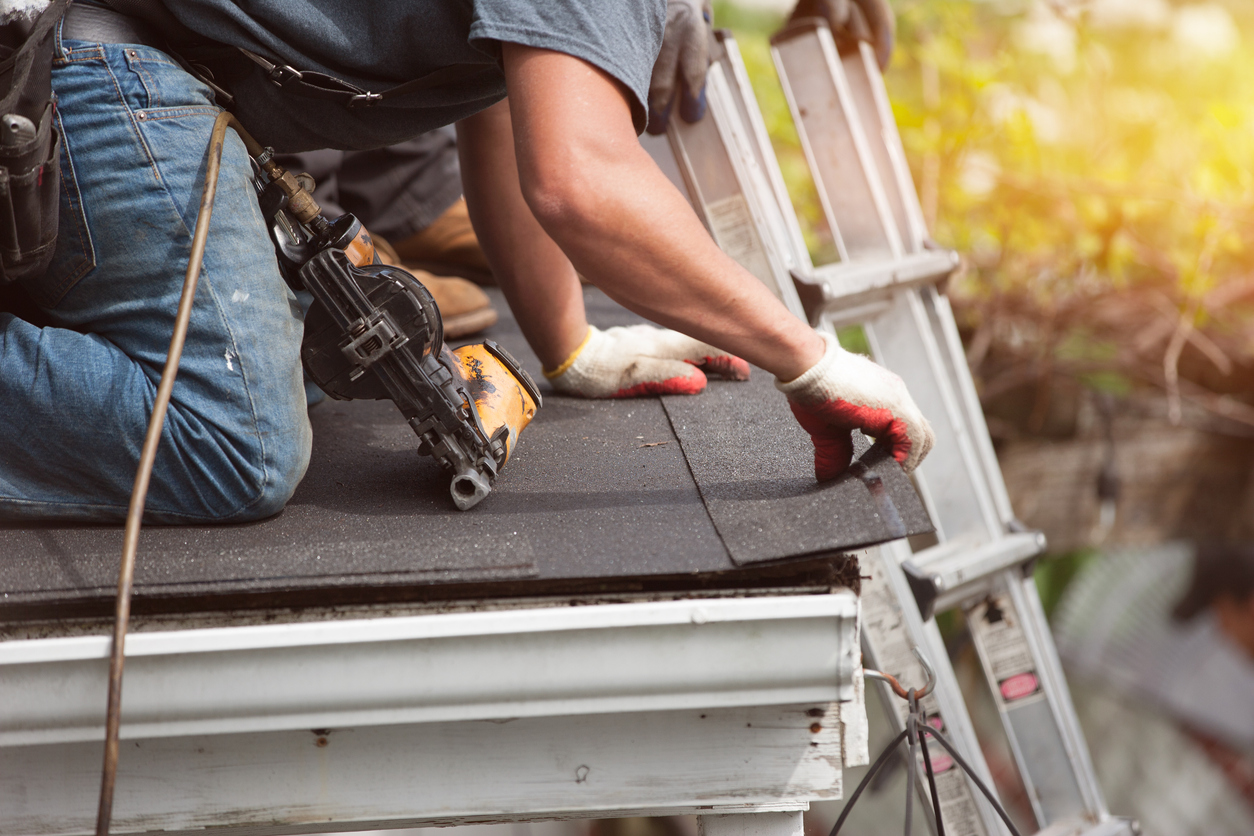Key Considerations for an Effective Roof Covering Installment: Accomplishing Long Life and Efficiency
In getting started on the journey of roof covering installment, one should focus on key factors to consider to guarantee both durability and effectiveness. The choice of products, tailored to hold up against local climate conditions, plays an essential role in preserving architectural honesty. As we discover these elements, it comes to be evident that a successful roof installment is not just regarding covering a structure but concerning crafting a resistant and lasting solution.
Picking the Right Products

Climate plays a crucial role in material choice. In areas vulnerable to hefty rains or snow, materials like asphalt tiles or steel roofing with high water resistance are recommended. On the other hand, in warm climates, products with reflective properties, such as great roof covering membranes or floor tiles, can help in reducing energy prices by dispersing sunlight.
Budget considerations also affect material selection. While premium products like slate or clay tiles offer durable efficiency, they include greater ahead of time prices. They can show affordable over time due to their very little maintenance requirements and prolonged lifespan.
Finally, the architectural style of the structure must balance with the roofing material. For example, conventional homes may gain from wood roof shingles, whereas modern-day frameworks could go with sleek metal finishes. By meticulously evaluating these factors, you can choose products that straighten with both useful and aesthetic goals.

Comprehending Roofing System Layout
Recognizing roofing system style is important in achieving a well-functioning and visually pleasing framework. The layout of a roofing system affects not just the aesthetic charm yet likewise the architectural stability and capability of the building. An attentively made roofing system can enhance the overall building style while making sure efficient drainage, insulation, and ventilation.
The pitch, or slope, determines how efficiently water and debris are shed from the roofing system surface, influencing the life-span of roof covering materials. Gable roofings are prominent for their simplicity and reliable water losing, while hip roofing systems supply outstanding security in high wind areas.
Structural support group, such as trusses and rafters, are vital in distributing weight and keeping the roofing system's stability. Proper design makes certain that the roof can hold up against environmental lots and resist contortion. Furthermore, incorporating attributes like overhangs and eaves can shield the building's façade and improve energy effectiveness by supplying color and reducing warm gain.
Ultimately, a well-considered roofing system design equilibriums create, function, and toughness, adding to the long-lasting success of the installment.
Climate Considerations

In hot and sunny climates, roof products must reflect, instead of absorb, solar heat to keep power performance and protect against excessive thermal growth, which can cause material destruction - Keep Dry Roofing St Peters MO. On the other hand, in chillier regions, materials must offer adequate insulation to avoid warm loss and endure freeze-thaw cycles that can cause breaking and various other architectural concerns
In addition, the option of shade and coating can significantly influence a roofing's thermal efficiency, particularly in locations with severe temperature level variants. Local structure codes frequently use advice on Read Full Report suitable products and styles, reflecting local environment concerns. A complete understanding of climatic conditions is important for picking products and styles that make sure a roofing system's optimum efficiency over its life expectancy.
Setup Best Practices
Effective roofing setup is a crucial component of guaranteeing long-lasting longevity and performance. Using high-quality tiles, underlayment, and blinking tailored to the certain environment and building layout will boost the roofing system's strength.
Just as important is the prep work of the roofing deck. Making certain that the deck is tidy, completely dry, and structurally sound before installation prevents problems such as leakages and premature wear. Correct ventilation is an additional crucial consideration, as it mitigates dampness accumulation navigate to this site and thermal tension, thereby prolonging the roof's lifespan.
Accuracy in measurement and placement during the installation procedure is important. This involves exact positioning of tiles and thorough interest to overlapping, which prevents water access. Employing professional, skilled labor ensures these criteria are met, minimizing the threat of errors that might endanger the roof covering's performance.
Power Effectiveness Strategies
Enhancing a roofing's energy efficiency is a tactical factor to consider for decreasing power prices and ecological impact. By selecting ideal products and innovations, homeowners and builders can considerably boost the thermal efficiency of a roofing, therefore minimizing power consumption. Among the key methods involves using reflective roof covering materials, which disperse even more sunlight and soak up less heat. This can lead to a significant decrease in cooling down prices, specifically in warmer environments.
Additionally, the consolidation of sufficient insulation is crucial in preventing warmth transfer between the interior and outside of a building. Insulation materials with high R-values, such as spray foam or inflexible foam boards, work in maintaining a constant interior temperature, thus maximizing heating and cooling system efficiency.
Moreover, the assimilation of photovoltaic panels on roofs not only creates sustainable energy however can likewise give color, more lowering heat gain (Keep Dry Roofing St Peters MO). Technologies like great roofings, which use layers to show even more sunlight, are additionally getting appeal for their capacity to lower roofing system temperature levels
Final Thought
Finally, attaining a successful roofing check that installation requires a thorough approach that integrates the option of top notch products customized to details weather conditions, thoughtful style factors to consider for optimal water drainage and structural stability, and adherence to precise installment practices. These elements jointly guarantee the avoidance of wetness build-up and thermal stress, thereby boosting the roof's toughness and effectiveness. Integrating strategies to boost energy effectiveness further contributes to minimizing upkeep needs and decreasing power intake over the roofing's life expectancy.
Comments on “Why Homeowners Prefer Keep Dry Roofing St Peters MO for Their Roofing System Fixing Needs”